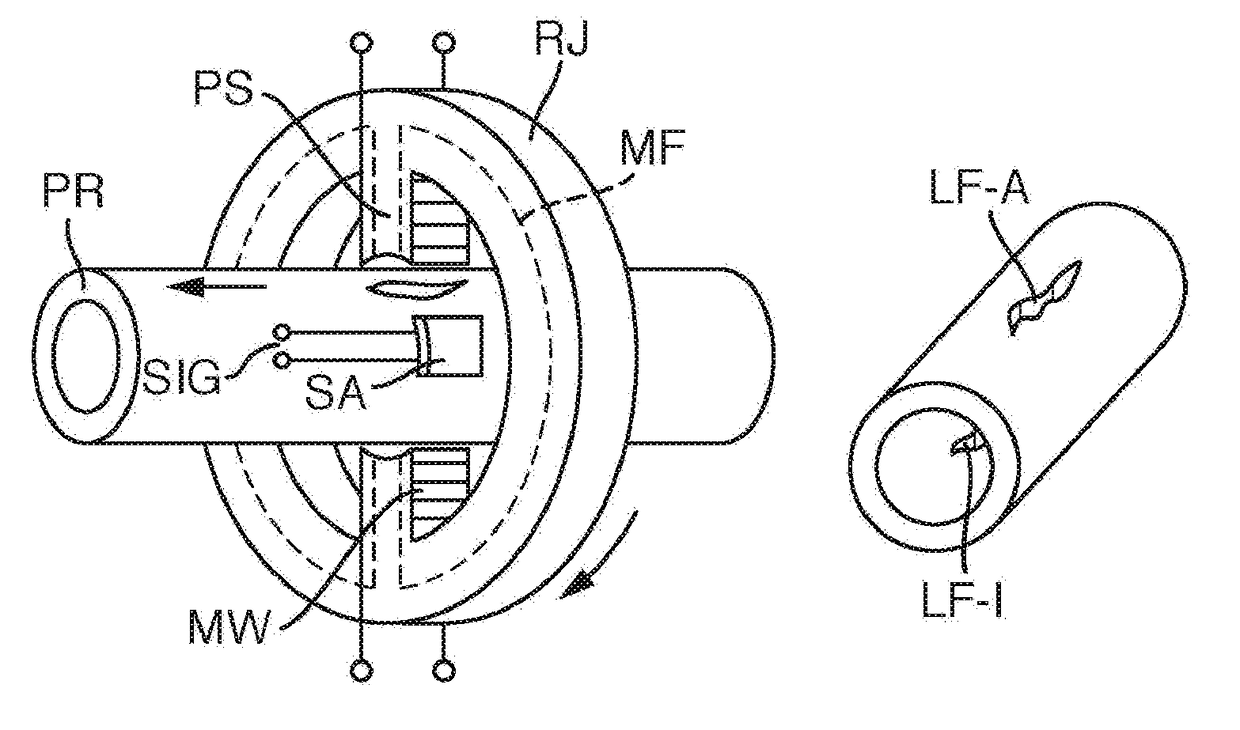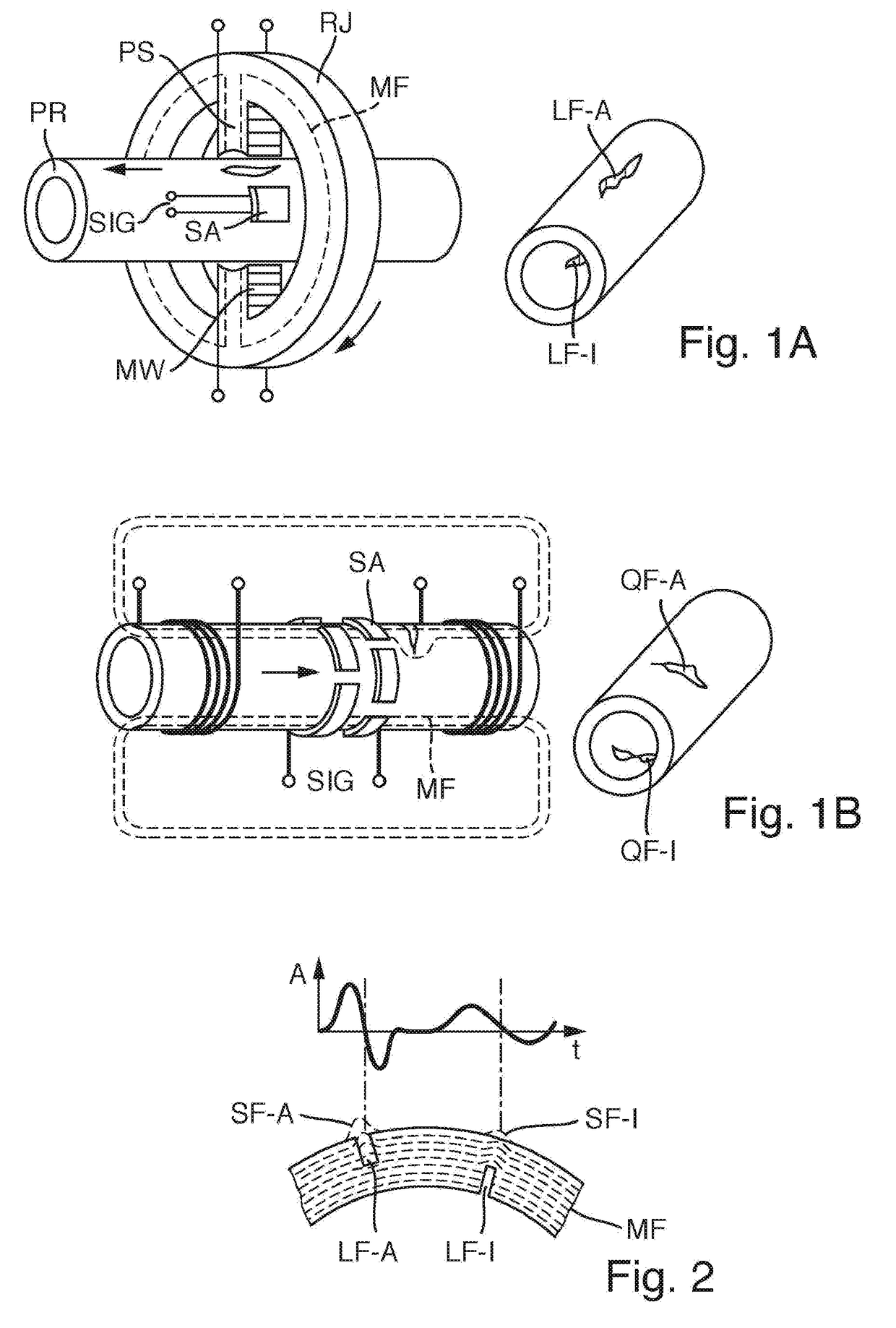Method and Apparatus for Leakage Flux Testing
a leakage flux and flux technology, applied in the direction of material magnetic variables, etc., can solve the problem that the high spatial resolution of individual probes, in general, cannot be fully achieved, and achieve the effect of increasing the relevance of further processing signals
- Summary
- Abstract
- Description
- Claims
- Application Information
AI Technical Summary
Benefits of technology
Problems solved by technology
Method used
Image
Examples
Embodiment Construction
[0059]Below, exemplary embodiments of the claimed invention are explained on the basis of an apparatus for leakage flux testing of ferromagnetic material to be tested, in the form of hot-rolled ferromagnetic pipes in a continuous method. The apparatus is configured for the detection of defects or inadequacies or imperfections of different types and may, for example, reliably detect rolling faults both on the pipe inner side (inner fault) and on the pipe outer side (outer fault). In so doing, it is possible to reliably find and characterize longitudinal faults (faults with the main direction of extent parallel to the pipe longitudinal axis) and transverse faults (faults with the main direction of extent in the circumferential direction or perpendicular to the pipe longitudinal axis) and oblique faults (transversely to the longitudinal direction and to the circumferential direction).
[0060]In one embodiment, two partial systems are integrated in a multi-testing block. A rotating partia...
PUM
| Property | Measurement | Unit |
|---|---|---|
| width | aaaaa | aaaaa |
| fault length | aaaaa | aaaaa |
| fault length | aaaaa | aaaaa |
Abstract
Description
Claims
Application Information
 Login to view more
Login to view more - R&D Engineer
- R&D Manager
- IP Professional
- Industry Leading Data Capabilities
- Powerful AI technology
- Patent DNA Extraction
Browse by: Latest US Patents, China's latest patents, Technical Efficacy Thesaurus, Application Domain, Technology Topic.
© 2024 PatSnap. All rights reserved.Legal|Privacy policy|Modern Slavery Act Transparency Statement|Sitemap



